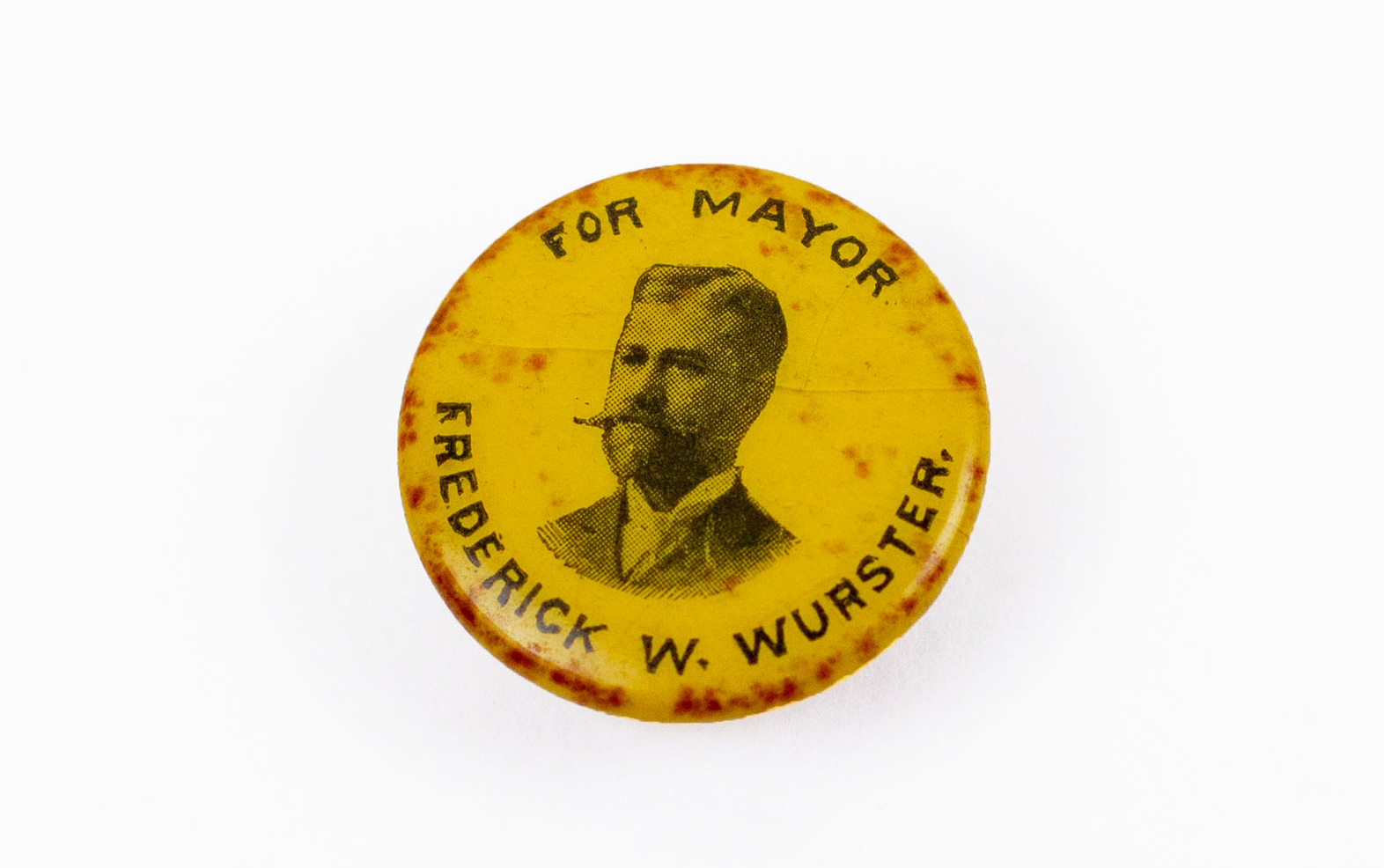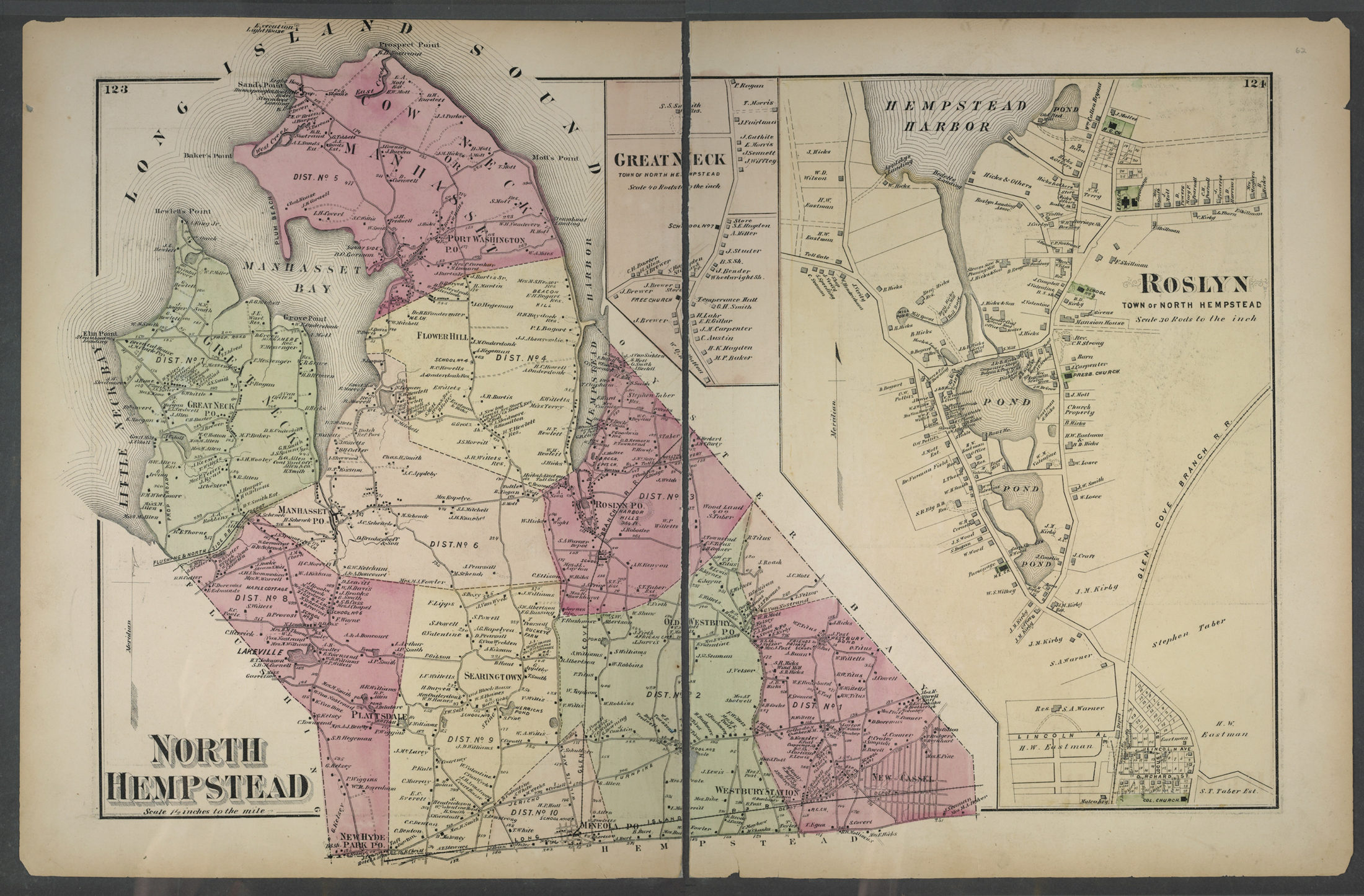“Pleased that he is a New Yorker”
Bloodgood Cutter, Greater New York, and the Birth of Nassau County
From his Little Neck farm sixteen miles northeast of Manhattan, Bloodgood Cutter witnessed the great debate over the consolidation of Greater New York, which was decades in the making but at its fever pitch in the 1890s. Cutter seems to have left no poetic remembrance related to it despite the enormity of the event. Nevertheless, his likely perspective on consolidation becomes clear through his political and personal interests and provides insight from the region that eventually became the far eastern edge of Greater New York City.

Old home of Poet Bloodgood Cutter, Little Neck, 1909
Eugene L. Armbruster photographs and scrapbooks (V1974.022.14.030)
Brooklyn Historical Society
Following the Civil War, the region around New York Bay experienced unprecedented economic and population growth. For many area entrepreneurs, the financial benefits were stymied by internal competition and clashing municipal governments. With promises that consolidation could increase tax revenue, improve land values, and end boundary disputes, boosters rigorously campaigned to consolidate the region under a united municipal government, one to oversee New York City, Brooklyn (Kings County), Queens County, parts of Westchester County, and Staten Island. After decades of petitioning and a public vote in 1894 that passed but was squashed in Albany, the state approved consolidation in 1897. The City of Greater New York, more than 300 square miles and 3 million residents strong, came into existence on January 1, 1898.

Frederick W. Wurster mayoral campaign button, 1896
M1991.415.1a,b
Brooklyn Historical Society
Following consolidation, newspaper publishers around the country described Bloodgood Cutter, “the farmer poet of Long Island,” as “much pleased over the fact that he is now a citizen of New York.” As an extensive property holder and a supporter of modernization efforts like laying new railroad tracks that connected eastern Queens County to New York, Cutter saw great potential personal reward in consolidation.

Atlas of Long Island, New York, 1873
Frederick W. Beers
New York Public Library Digital Collection
Cutter’s property, encompassing the southern tip of Little Neck Bay between Flushing and North Hempstead, was very close to the city’s new borders. Consolidation tore Queen’s County in half. The towns closest to Manhattan—Long Island City, Newtown, Flushing, and Jamaica—joined Greater New York. The eastern towns of Hempstead, North Hempstead, and Oyster Bay did not. On January 22, 1898, the citizens of the latter towns met to discuss their future.
Image Missing
[E09 tombstone]
Nassau County, New York, 1906
L.I.-[19–?].Fl
Brooklyn Historical Society
Residents of the farther, disputed areas in Queens debated joining either New York City or Suffolk County. Ultimately, they decided to become a new county, Nassau County, “for the simple reason that they could govern themselves, and their interests were identical.” Nassau County was born January 1, 1899. As the 1906 map of Nassau County shows, New York City annexed Cutter’s property into Flushing, creating a cut into North Hempstead in an effort to control the ports on the Bay. Bloodgood Cutter became a New Yorker.